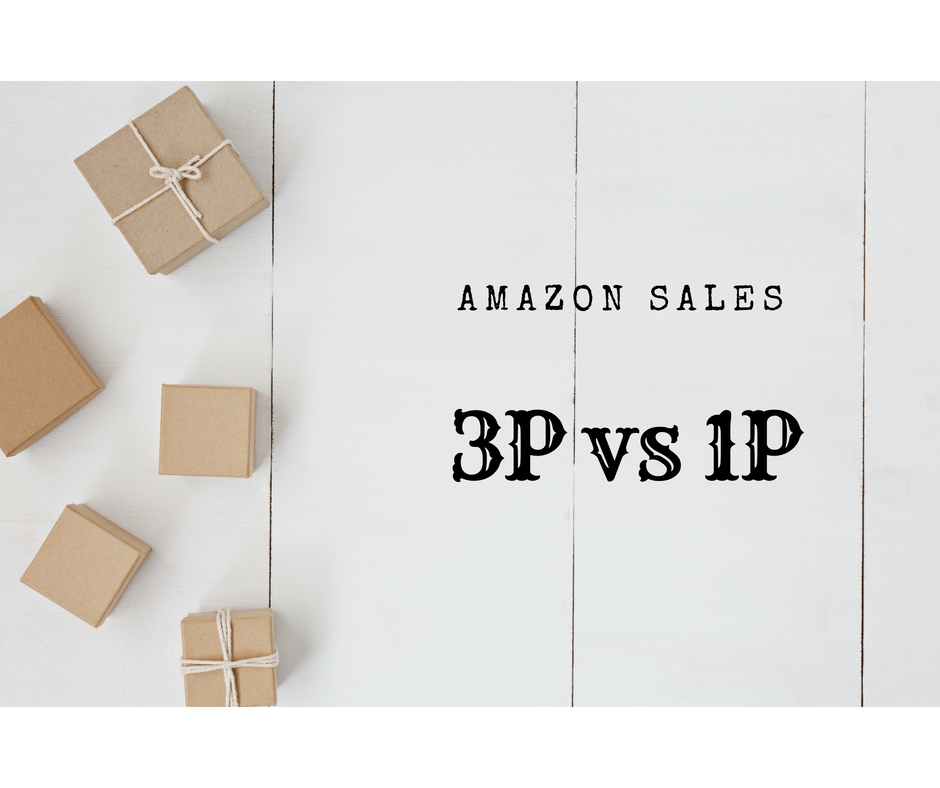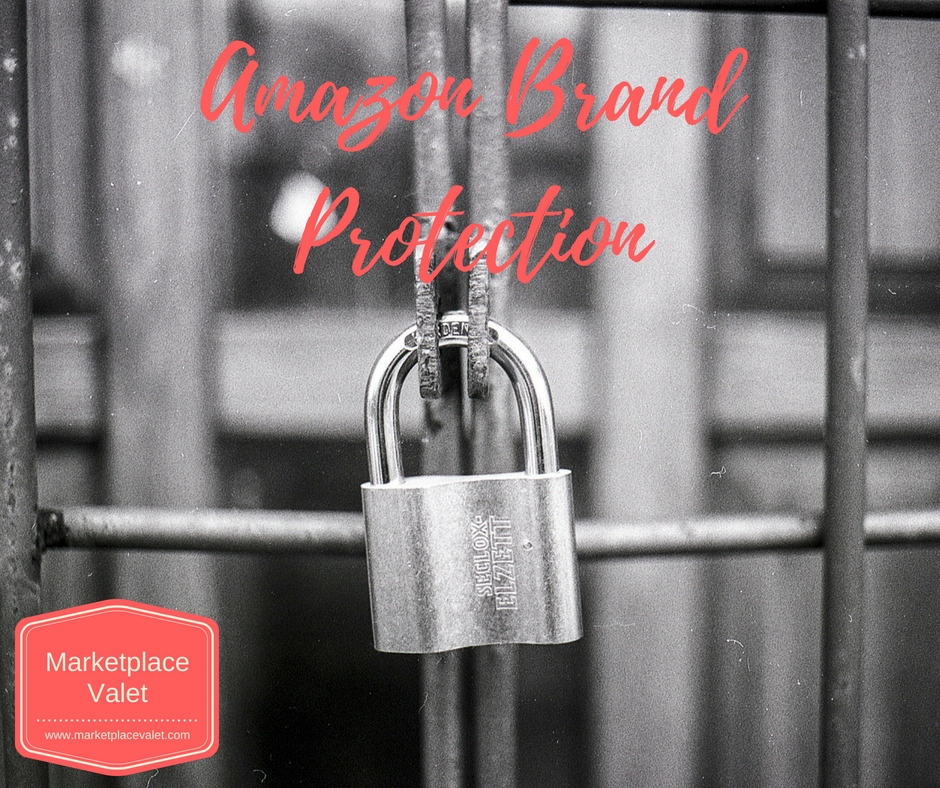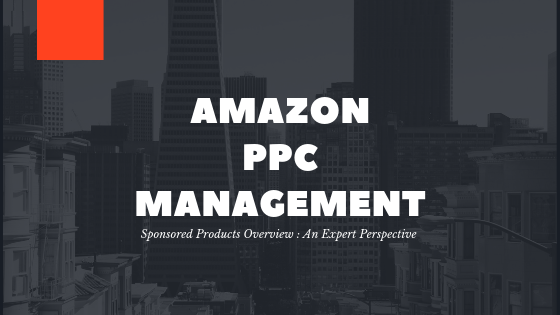


To sell to Amazon, or not to sell to Amazon? That is the question for any marketplace seller.
Let’s clarify the difference between 3P and 1P for anyone new to the game.
3P: For a brand or ecommerce company, this is the act of selling as a third-party to consumers through the Amazon’s marketplace platform. This requires using Seller Central. Now some brands want to set up their own 3P seller accounts, while others work with a partner, such as Marketplace Valet, with pre-existing 3P seller accounts to list and sell to consumers.
1P: First party selling is another name for selling at wholesale. This means the brand would be selling their products at wholesale to Amazon directly, and would do so through Amazon’s Vendor Central platform.
More than ever, brands are going through a paradigm shift in the way that they do business, and how they face retail in the age of Amazon. Historically (or the way of the “old guys”), brands built their entire infrastructure around a wholesale (1P) business. Leave the consumer sales up to the retailers. But what many brands have found is that lack of control over the direct to consumer sales on marketplaces is resulting in decreasing margins, failing MAP policies, eroding brand equity, and a mixed customer experience. So more than ever, brands are trying to figure out how to gain back control aka how to go direct to consumer via 3P.
Now I am a super biased 3P seller. Yet, hopefully you can appreciate my arguments for selling 3P vs 1P. Below I try to fairly outline the differences.
Control Your Brand
What message or story is your brand telling on Amazon? Does your team have a plan for how to get that across? Content, copy, images, pricing, etc, are all aspects that craft a story around your brand and the products you sell. But who is creating that content, and setting up those listings?
It blows my mind that even the brands with the strictest distribution channel controls are surprised when I tell them that somebody is listing and selling their products on marketplaces (Amazon). Enter the “grey market” seller or infringer. Quite often, these unauthorized third-party sellers create shitty listings that are confusing to customers. Some will change the brand name (to avoid Amazon’s brand gating constraints), while others are literally selling counterfeits. Amazon is a product search engine, and a product listing on Amazon.com is just like a website is to Google.com. Now tell me how you feel when you are doing a Google search and you click a link on to a site that looks like it was created in the late 90’s. That is the same way a customer can feel when they click through to a product detail page scantily populated with poor content.
It’s 2018, and brands need to be properly represented so Amazon customers don’t get the wrong impression of the brand – and leave you for some Chinese substitute or something from AmazonBasics (Yes Amazon will attempt to eat your lunch).
At first, Amazon did give some brands some exclusive features through 1P, such as A+ Detail pages and videos. But that stuff is now widely available to brands (through Brand Registry) for the 3P guys too via Enhanced Brand Content (EBC). What has been known as a blessing and a curse is that content can be “locked” in Vendor Central. This means that the listing data cannot be altered once uploaded through Vendor Central. This is great if you are the original brand owner adding great content, as that gives you the opportunity to present your brand as intended. However, the issues that come across my desk often center around how somebody sold product to Amazon 1P, and either Amazon built a poor listing or the unauthorized seller did and now Amazon locks BAD content for that listing.
If you truly want total control over your brand, content, and pricing, there are a few things that you need to do.
-
Registered Patent/Trademark
-
Brand Registry
-
Brand Gating
-
Limited and/or highly policed distribution channels
-
Brand Protection Service to monitor listings on marketplace channels
“Advantage: 3P”
Control Over Pricing
Amazon 1P claims to honor a brand’s MAP policies. You’d have better luck catching a train from station 9 and ¾ on your way to Hogwarts. Blame it on the algorithm you will hear. Basically, if anyone else is selling your product at a lower price, expect Amazon to match it.
The issue compounds from the very start as it is nearly impossible to get Amazon 1P back to MAP. And when dealing with a company that has historically shown brands and retailers that they will sell products at a loss to own market share, the price erosion problems usually become systemic. Here is why. If you are doing any other kind of 1P business with other retailers, they may discontinue working with your brand because a seller/Amazon isn’t playing by the same rules. So a lack of control over pricing on Amazon not only creates downward pressure on margins, but also hurts the rest of your wholesale strategy.
With a third-party seller account listing, price is established by the seller. Therefore, you own the price point, or your trusted 3P Seller partner will on your behalf.
“The Price Control Winner: 3P”
Sales Velocity
1P guys at Amazon will claim that selling to them will lead to an overall lift, or increase in sales for your products on the site. But can they sell your product faster than you can?
If you are already at FBA, then selling to Amazon too just means that they will give themselves preferential treatment in the BuyBox. As to velocity, affects unknown. As to margin, well you sold your product to Amazon at a wholesale price, and now they are getting more of the sales on the listing.
In our experience, having sold to 1P and then brought it all back in house to 3P, is that Amazon will often plateau on a given ASIN well before we would. The reason is that once the dust settles, Amazon isn’t spending more than the established “co-op” fee on marketing/ads for your products. Whereas, when we are managing the direct to consumer sales in seller central, we dictate our marketing budget.
Now while it pains me to say this, there is a scenario where 1P has an undeniable edge. Their edge is most certainly with heavy or bulky items. For example, consider dishwashing detergent. You may as well be shipping a brick. Customers know that this type of item is relatively cheaper in stores because they don’t have to pay for shipping. And for the average 3P seller, even when attempting to use FBA, they have to consider those shipping and logistic fees when determining the price point. So I don’t think that there is any seller or 3PL in the country that can move weight around the country like Amazon. Therefore, it is totally possible for a brand or manufacturer selling these types of products will likely make more money selling 1P to Amazon. This is also the instance where having Amazon sell the product at a lower price is a good thing and will result in increased velocity. On your own, you may need to sell that detergent at $20 to make your margin, while Amazon may be willing to sell it for $12.
Advantage: None
Support from Amazon
… (crickets)
Advantage: Nobody
Fees to Consider
1P is going to want a good wholesale rate from you. They will expect that you treat them just like any other retailer. (For many brands, that means selling at 50% of MAP/MSRP).
Then 1P is going to claw at you for “Co-op” marketing fees, which range from 5% – 20% (we have seen as high as 22%). This is like a slush fund for the Amazon folks to use towards marketing your products on Amazon.com
Logistics/ Shipping/ Customer Service – None
For 3P Sellers, we are starting with all of the margin, and we are selling direct to consumer at 100% of the retail price (plus shipping of course).
The cost to play in Amazon’s sand box varies by product category. Electronics-8%, Jewelry- 20%, pretty much everything else is 15%.
If you are doing FBM- then you need to figure out your costs for postage, packaging, pick & pack, and customer service.
If you go 3P and use Amazon’s FBA program, then you will pay Amazon more than just the 15% referral fee. They have a fulfillment fee which includes storage, pick & pack, and postage. FBA also includes Customer Service…. Touche Amazon.
Advantage: If you like more money, 3P – but you do need to know your costs
Taxus Nexus
Nobody likes taxes. Selling 1P probably doesn’t create any new tax burden for your business. However, selling 3P can depending on where the inventory is stored. If all orders are FBM and shipped from the same facility, then no. But, if the brand is using FBA, then the inventory may be stored in several locations, creating a new nexus for your company. This creates additional tax liabilities. One way to avoid dealing with these issues head on is by way of working with a 3P seller partner. Then the tax burden is on them to figure out.
Growing concerns and fears around tax compliance is definitely an arrow in the 1P quiver as brands don’t want to think about that stuff.
Although an additional tax nexus sounds concerning, there are plenty of services available to 3P sellers for dealing with tax compliance. Leave it up to the bean counters anyway.
Advantage: tilted towards 1P
Margins
3P all the way. Why sell at 50% of Retail, when you can go direct at 100% of Retail?
Unless your products fit into the scenario I outlined above in “Sales Velocity” for the heavy or “bulky” variety.
Advantage: Third-Party
Our clients, for example, see an average Gross Profit of 65-70% of the Retail Price point per unit going 3P through Marketplace Valet, vs the average 1P seller is seeing around 40-45% of the Retail Price point per unit.
Marketing & Promotional Opportunities
At this point, I can’t think of any particular marketing vehicle that 1P has that the 3P sellers don’t.
Sponsored Products, Headline Ads, Product Display Ads, Coupons, Lightning Deals, Amazon Vine program, Enhanced Brand Content, Video Upload, Early Reviewer Program, Promotions, Giveaways, are all great opportunities for both sides.
Soliciting Feedback and Reviews was definitely more on the 3P side in the past, but as of last year when Amazon updated their policies, giving customers the ability to opt out of communications from sellers, capturing reviews has dropped dramatically.
Advantage: None
Staying In Stock
1P often runs out of product, or will simply choose to drop SKUs at random. This can really crush the Sales Velocity for an ASIN as Out of Stocks lead to low conversion (ZERO) and ultimately suppression.
With 3P, stock outages only occur if you are having serious inventory management/ manufacturing issues. If you are, please take the time to figure that out because you are leaving a ton of money on the table. Otherwise, the brand has complete control over a Listing showing “Live” on Amazon.com
Advantage: #threeP
Day-to-Day Involvement
Time & Money
If your goal is to minimize the time or effort spent on Amazon, then 1P is definitely the winner here. Take orders, prep weekly, cash checks. Now if brand protection and policing MAP policies are important, then this does get a little murky because that can take a lot of time.
If going direct as a 3P, or with a 3P selling partner, there is quite a bit more of an energy investment in optimizing the business. But you would choose this route if the goal is money. Using a 3P partner means less money than doing it in house, yet more than wholesale. Either way, there is still more day to day.
Advantage: OneP
Getting Paid
1P with Amazon is like a government contract. You won’t get paid anytime soon, but you will get paid. We have learned that the average funding time on a PO is 105 days. That is an awful lot of Float. I hope your brand owns a bank.
3P Sellers get paid bi-weekly (there are some legacy accounts that still have 1 week payouts).
Advantage: Clearly 3P
Shipping and Accounting
They are both fcuked.
1P and 3P have a brand sending shipments all over the place now.
Advantage: Neither
Reporting & Analytics
1P does have some extra insights.
Reporting data is good, exporting that data… ehh.
Business Reports and Sales Coach are certainly helpful tools.
I just think that this data is more valuable to a 3P seller so that they can make proper changes to boost the listing.
Advantage: The person that makes sense of the data
Customer Service
With wholesale to 1P, Amazon handles customer service and deals with fraudsters. You don’t have to deal with any “In Authentic” claims on your own brand.
Even if the brand or 3P is using FBA for customer service, there is still the issue of managing complaints, feedback, and fraud. Competitors use a litany of black hat practices to attack listings and sellers, including making purchases and claiming “Inauthentic”. Amazon doesn’t play with any kind of in authentic claims, so anyone’s seller account can be in jeopardy, especially a 3P seller partner.
Advantage: Amazon 1P
Multi-Channel Fulfillment
With 1P, that inventory is no longer yours. So you won’t be able to access it to serve other channels.
For 3P sellers, you don’t need to have your own warehouse or logistics operation to handle multi channel orders. You can totally leverage Amazon and FBA for fulfillment of all orders.
However, you have to be careful about which channels. Other marketplaces don’t take too kindly to orders shipped to their customers in Amazon boxes. (sorry ebay).
Therefore, working with a 3P seller that handles fulfillment is the best option. That way the brand can fulfill orders to many channels. See www.marketplacevalet.com
Advantage: 4P
Selling into Canada, Mexico, and EU Markets
Going international with 1P isn’t the worst thing. You can probably taste that backhanded compliment. If you can get the vendor side to manage the international shipments for you, this can work out pretty nicely actually. However, this rarely happens. Most brands need to build the foreign Vendor relationships and then navigate exporting product to those countries. Dealing with foreign marketplaces for FBA as a 3P is pretty much a nightmare. Wanna talk Tax Nexus (see above) -there would need to be a whole new section added to that for international marketplace sales… by country.
Fortunately, if you are selling 3P via FBM, you can mitigate some of the tax issues while still reaching all of the marketplaces FROM ONE POINT OF INVENTORY.
Advantage: 3P
Pay-Per-Click (PPC)
1P has better visibility into customer searches, terms, conversion rates, etc. This doesn’t mean that they are maximizing the opportunity for your brand though.
3P sellers may have to churn through some non performing terms but you will get to the winners. In addition, you control the marketing budget and how much you want to allocate towards new terms and campaigns.
Advantage: The House Always Wins- Still paying Amazon for the clicks. L
Loss of Sales from Own Domain
Selling 1P or 3P both open up a brand’s website to cannibalization. Basically every retailer that can sell your product on the internet is competing against your own domain from an SEO and sales perspective. They are all potential competitors.
There is one trick if a brand is working with a 3P selling partner. Since that 3P Selling Partner is not the brand directly, then the price listed on Amazon.com does not need to reflect the pricing on the brand’s website. Therefore, there is no policy violation if the prices don’t match.
No Advantage
Conclusion: 1P vs 3P?
It should come as no surprise that 3P is our choice, and it should be yours too. Even Amazon is giving sellers a clear indication of relevancy as they are consolidating the 1P and 3P teams. We have heard from clients that have met with Amazon 1P folks that Vendor Central is going to become more like Seller Central. Lastly, let’s consider Amazon’s own financial statements. We are also getting clear signals from brands that 3P is becoming their defacto choice, and they are racing to figure out how to solve direct to consumer.

